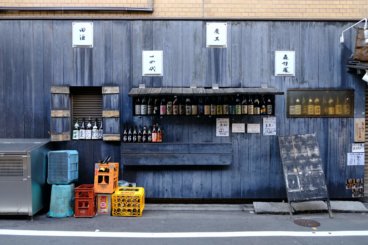The Japan Rail Pass can be a great way to get around Japan, but most people don’t realize that it’s not always the best option.
Depending on your Japan itinerary, the JR Pass could save you a fair amount of money and be fantastically convenient. On the other hand, in some cases the Rail Pass is actually more expensive – and less convenient.
Read more about getting around in our comprehensive guide to train travel in Japan.
So how do you figure out whether or not the Rail Pass will be your best bet? Before we delve into the details, let’s begin with a little background about the Japan Rail Pass for those unfamiliar with it.
Originally written in 2014, this post was updated and republished on August 14, 2020.

Japan Rail Pass Basics
The Japan Rail Pass is a discounted train pass offered by the Japan Railways (JR) Group for tourists, designed to help travelers explore Japan more affordably.
JR has an extensive network of trains and bullet trains (shinkansen) throughout the country, and when you have the JR Pass you have access to nearly all of it – making it a great value in many cases.
The JR Pass is available in denominations of 7, 14 and 21 days, and when purchasing it you can select between standard class (known as Ordinary) or first class (known as Green Car).
The prices of the various Japan Rail Passes are as follows (find currency exchange rates):
- ¥29,650 for the 7-day JR Pass (¥39,600 for Green Car)
- ¥47,250 for the 14-day JR Pass (¥64,120 for Green Car)
- ¥60,450 for the 21-day JR Pass (¥83,390 for Green Car)
Ordinary class is quite comfortable in Japan, but for luxury travelers we normally recommend Green Car, which has more spacious seating and an overall more relaxing environment.
Based on all of this, you may be thinking that the Rail Pass sounds pretty good so far. So why is it not the best option in every case?

When The Japan Rail Pass Isn’t The Best Option
In many cases, if you are making multiple journeys on the bullet train, the Japan Rail Pass may be a good value. However, the Japan Rail Pass may not be the best option for you if:
- You’re a luxury traveler and don’t mind spending a little extra for added convenience
- You’re traveling during a particularly busy travel period
- Your Japan itinerary doesn’t involve many long train/bullet train journeys
- Your long train/bullet train journeys don’t fit neatly into 7-, 14- or 21-day periods
(If you’re one of our clients and trip-planning with us, you don’t need to worry about this as we’ll do all the legwork for you.)
Below are more details about each scenario to help you figure out whether the JR Pass is right for you or not.
You’re A Luxury Traveler
If you’re a luxury traveler and don’t mind spending a little extra for added convenience, the Japan Rail Pass may not be the best option for you.
Would you rather have all your train reservations made in advance, and your tickets sent directly to your hotel or ryokan? Or would you rather spend time during your trip visiting ticket counters, waiting in line, and making seat reservations after you’ve arrived in Japan?
One of the few drawbacks of the Japan Rail Pass is that it requires you to pay a visit to a JR ticket office after you’ve arrived in Japan.
This is true whether you order your Japan Rail Pass prior to your trip — in which case you must present your passport to exchange the Rail Pass voucher for Pass itself — or purchase it once in Japan. (Until 2017, it was necessary to purchase your JR Pass prior to arriving in Japan, but at present Japan Rail is experimenting with offering the chance to purchase the JR Pass in Japan for a limited time.)
Another downside is that you can’t make train/seat reservations for any of your journeys until after you have done the above. This means that with the Japan Rail Pass it’s never possible to reserve any train tickets until after you’ve exchanged your voucher at a JR ticket office.
If you have a limited amount of time in Japan, or would simply rather not have to deal with this, a better option is to book through a travel company (whether through us or another Japan specialist). This way you can arrange to have all your train tickets neatly sent to your first hotel. Then all you need to do is show up for your journeys, as everything will already be set for you.
It goes without saying that doing things in this way can save you time and effort.

You’re Traveling During Peak Season
If you’re traveling during a particularly busy travel period, the Japan Rail Pass may not be the best option for you.
During non-peak travel periods, getting a seat on trains and bullet trains is not usually a major issue. In addition, for most routes (for example, Tokyo to Kyoto) trains leave with some frequency.
However, during peak travel periods, when domestic travel spikes drastically, trains often sell out and it can be a hassle to make last-minute seat reservations.
Since (as described in the section above) the Japan Rail Pass doesn’t permit you to make train/seat reservations until after you’ve arrived in Japan, you may be best off obtaining your train tickets in advance if you’re traveling during one of Japan’s peak travel periods.
While domestic travel also spikes during three-day weekends, the busiest travel periods of the year in Japan are:
- New Year (particularly the first few days of January)
- Golden Week (usually the first week of May)
- Obon (in mid-August)
If you’re traveling during one of these holidays, our usual suggestion would be to forgo the JR Pass in favor of individual tickets.
Learn more about holidays, the seasons, and when to visit Japan.
Your Itinerary Doesn’t Involve Many Train Journeys
If your Japan itinerary doesn’t involve many long train/bullet train journeys, the Japan Rail Pass may not be the best option for you.
As shown above, the 7-day ordinary JR Pass costs around US $300. This means that, for example, if you’re only taking $200 worth of train journeys, the Rail Pass would end up being more expensive than simply purchasing individual tickets.
Let’s consider a real-world example:
Imagine you’re flying into Tokyo and ending your trip in Kyoto. This is a fairly common scenario, since Osaka (which is very near Kyoto) has two major airports, and many travelers fly into Tokyo but depart from Osaka.
For more sample trips, see our sample itineraries.
If you’re spending a few days in Tokyo followed by a few days in Kyoto, your list of major train journeys might look like this:
- Narita Airport to Tokyo Station, via JR’s Narita Express train
- Tokyo Station to Kyoto Station, via the JR bullet train
- Kyoto Station to Kansai International Airport, via JR’s Haruka Express train
To help you see whether or not the Rail Pass would be worthwhile, the next step is to determine what the cost of these journeys would be without the Japan Rail Pass. You can use two online tools to help you do this: Jorudan and Google Maps.
For example, here is a sample search from Tokyo Station to Kyoto Station:

After obtaining the cost for the other two journeys, you’ll find that the costs are as follows:
- Narita Airport to Tokyo Station: ¥3,020
- Tokyo Station to Kyoto Station: ¥13,910
- Kyoto Station to Kansai International Airport: ¥3,370
The total cost of these train journeys comes to ¥20,300 (about US $200). Since the 7-day Japan Rail Pass costs about $300, you would save money by forgoing the Rail Pass in favor of individual tickets.
Some will argue that the Rail Pass would nevertheless be advantageous, since it gives you access to local trains within cities such as Tokyo and Kyoto. While it’s true that you can use the JR Pass on some trains in Tokyo – such as the ubiquitous JR Yamanote Line (Tokyo’s loop line) – unfortunately you can’t use it on other trains in Tokyo, such as on the Tokyo Metro subway lines. It’s also not valid on many of Kyoto’s trains.
Learn more about the price of normal subway trips (and other common items) in Japan.
However, if you plan to take one or more relatively long day trips from Tokyo and/or Kyoto, the cost of these may make the Rail Pass worthwhile, so make sure to take this into account.
Note: If you’re simply looking for the convenience of being able to hop on and off trains and subways without having to purchase a ticket each time, we recommend IC cards, which can be purchased in Japan and are designed specifically for this purpose. Learn more in our guide to train travel in Japan.

Your Train Journeys Don’t Fit Neatly Into 7-, 14- Or 21-day Periods
Lastly, if your long train/bullet train journeys don’t fit neatly into 7-, 14- or 21-day periods, the Japan Rail Pass may not be the best option for you.
One of the most important things to note about the JR Pass is that it’s valid only for consecutive days, meaning you can’t “skip” days. For example, if you begin using your 7-day Japan Rail Pass on April 1st, it will be valid through April 7th.
Practically speaking, this means that if you have two bullet train journeys, but they’re separated and not possible to do within a 7-day window, then you wouldn’t be able to use the 7-day Rail Pass to cover them.
On the other hand, if you’re criss-crossing Japan and taking several long train/bullet train trips, then a 14- or 21-day Pass may really come in handy.
Special Note About Non-Tourists
The JR Pass is only available to short-term visitors to Japan, so if you’re visiting a friend or family member who lives in Japan, it’s important to bear in mind that they may not be eligible for the Japan Rail Pass.
It’s generally safe to assume that the person you’re visiting is not eligible for the Japan Rail Pass if they fit into one of the following categories:
- They are a Japanese citizen
- They are in Japan on a work or working holiday visa
- They are a student on a semester abroad in Japan
If you’re not traveling during peak season, this may not be much of an issue. But if you are traveling during peak season, it may be worthwhile for all of you to obtain train/seat reservations in advance. This will minimize the chances of your party being broken up onto different trains, and will make your travels easier and more relaxing.

To Rail Pass Or Not To Rail Pass?
While the JR Pass can be useful for many travelers, we hope this guide to Japan’s famous Rail Pass has helped you figure out whether or not you should get it!
Do you have more questions about Japan? Feel free to take a look at our Japan Travel FAQ page.



